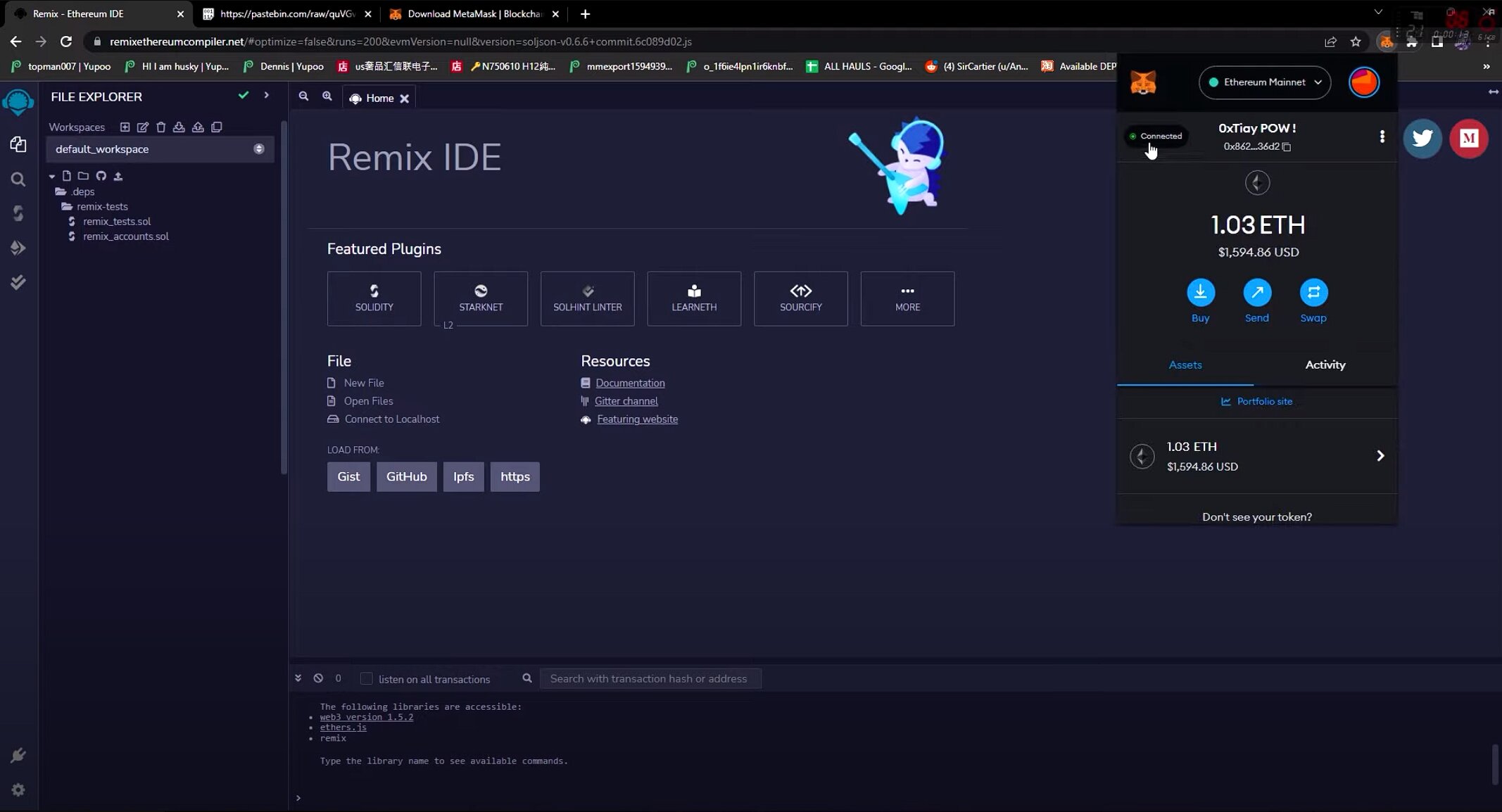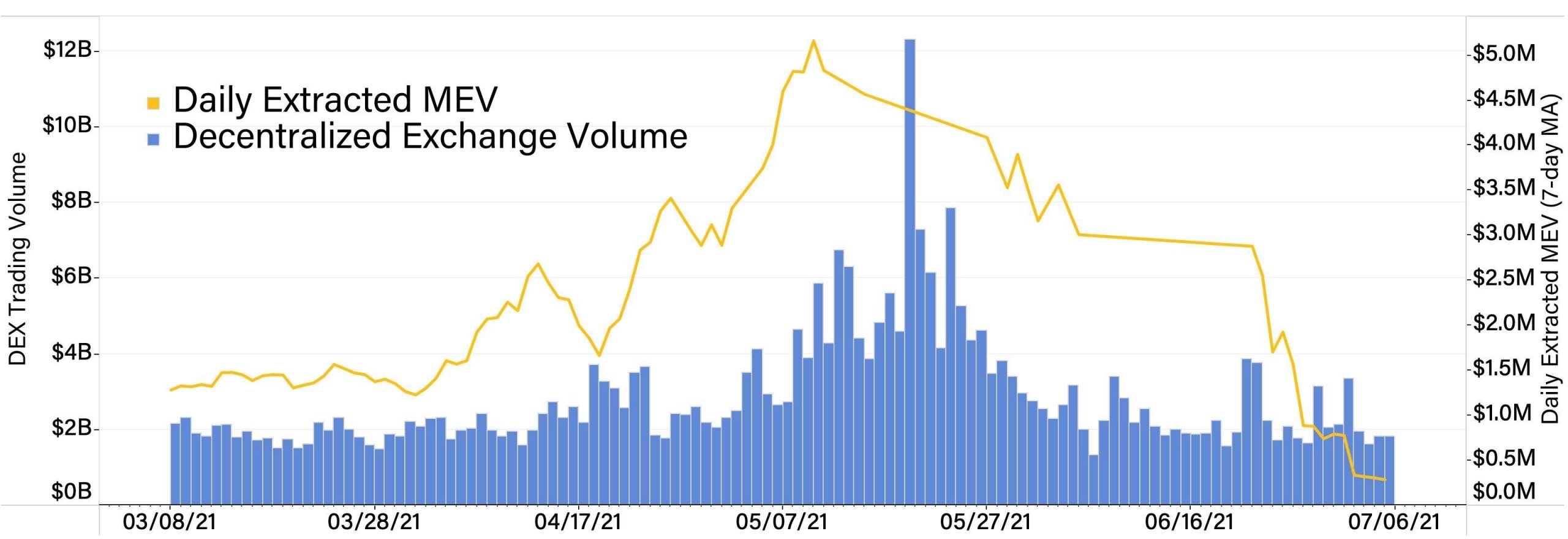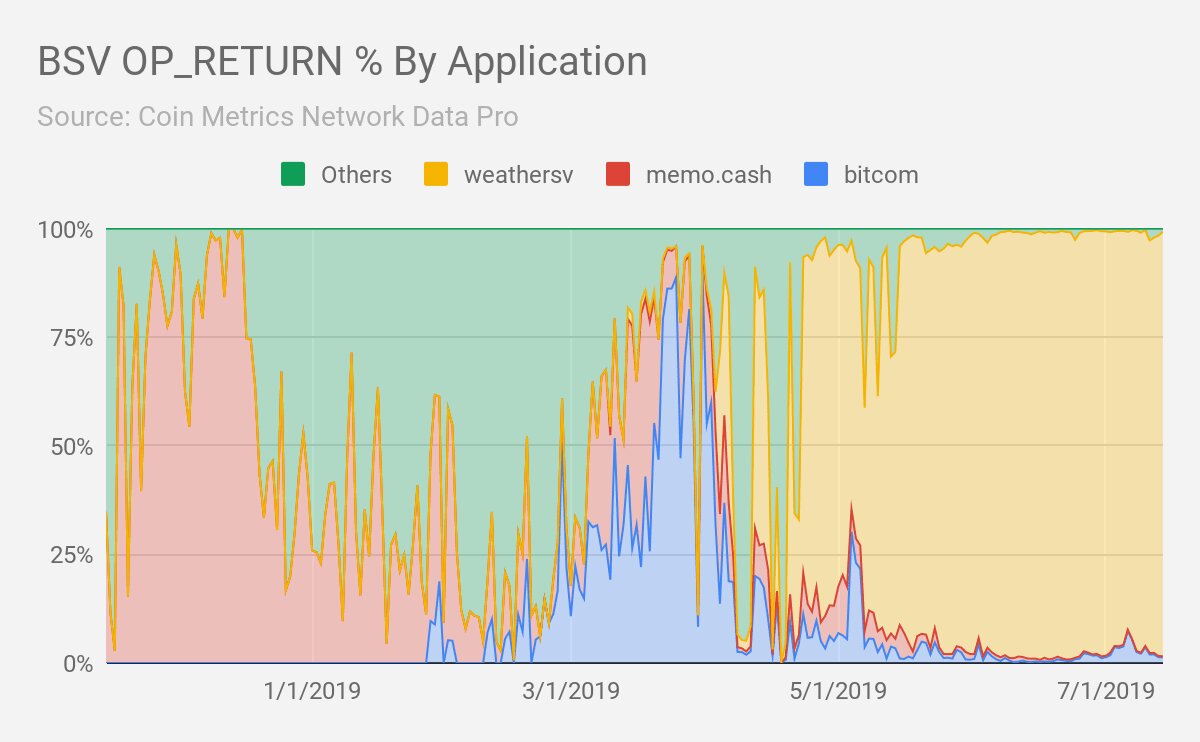Overview
Front running is a term commonly used in financial markets to describe the unethical practice where a trader or broker takes advantage of non-public information to execute trades on their own behalf before executing orders on behalf of their clients. This practice allows the front runner to profit from the anticipated price movement resulting from the client’s trade. In the world of crypto, front running has become a concerning issue as the industry continues to grow rapidly.
Front running in traditional financial markets has been a regulatory concern for many years. Regulators have imposed strict regulations to prevent this practice and protect investors’ interests. However, due to the decentralized and unregulated nature of the crypto market, front running has become more prevalent and harder to detect.
In the context of crypto, front running occurs when a person or entity, typically a miner or exchange employee, exploits their access to privileged information or control over the transaction process to gain an unfair advantage over other market participants. They can exploit this advantage by executing trades in advance or manipulating transaction confirmation to their benefit.
The process of front running crypto involves monitoring pending transactions in the memory pool or mempool. Once a profitable trade opportunity is identified, the front runner initiates their own transaction with higher transaction fees to prioritize its confirmation, effectively pushing the client’s trade into a lower priority.
There have been several high-profile examples of front running in the crypto market. One notable case took place in 2017 when an employee of an exchange used their position to front run an upcoming major announcement by executing trades in their personal account before making the news public. This unethical practice caused significant financial losses for the exchange’s clients.
The impact of front running on crypto investors can be severe. It erodes investor confidence in the market and undermines the integrity of the entire crypto ecosystem. Investors may suffer financial losses, and fair market conditions are jeopardized. It is crucial for both regulators and market participants to address this issue and implement measures to minimize the occurrence of front running in the crypto space.
To detect and prevent front running, crypto investors can adopt various strategies such as utilizing privacy-focused cryptocurrencies or using decentralized exchanges that eliminate the need for intermediaries. Furthermore, ongoing research and development of advanced technologies like zero-knowledge proofs and atomic swaps can enhance security and privacy, making it more difficult for front runners to exploit privileged information.
What is Front Running?
Front running involves the unethical practice of a trader or broker taking advantage of non-public information to execute trades on their own behalf before executing orders on behalf of their clients. This practice allows the front runner to profit from the anticipated price movement resulting from the client’s trade.
In a traditional financial market setting, front running occurs when a broker or trader has access to information about a pending trade from a client. Instead of executing the trade for the client immediately, the front runner executes a similar trade for their own account, taking advantage of the expected price movement that the client’s trade will cause. This enables the front runner to generate a profit by buying or selling the respective asset ahead of the client’s trade at a more favorable price.
Front running is considered unethical and is often illegal in regulated financial markets. This practice not only undermines the trust of clients but also goes against the principles of fair market practices. Regulators have implemented strict rules and regulations to prevent front running and protect the interests of investors.
In the world of cryptocurrencies, front running has also become a concerning issue as the market experiences significant growth. However, unlike traditional financial markets, the crypto market operates in a decentralized and often unregulated environment, making it more challenging to prevent and detect front running.
Front running in the crypto market involves individuals or entities exploiting their access to privileged information or control over the transaction process to gain an unfair advantage. In many cases, miners or employees of crypto exchanges may engage in front running by monitoring pending transactions and executing their own trades to capitalize on potential price movements.
The prevalence of front running in the crypto market is a cause for concern as it undermines the trust and integrity of the ecosystem. Investors may unknowingly face financial losses, and the overall market conditions become less fair and transparent. It is crucial for regulators and market participants to address this issue and implement measures to minimize front running in the crypto space.
Next, we will explore how front running occurs in both traditional financial markets and the crypto market, delving into the specific mechanics and techniques used by front runners to gain an unfair advantage.
Front Running in Traditional Financial Markets
In traditional financial markets, front running is a practice that occurs when a trader or broker executes trades based on privileged non-public information, putting their own interests ahead of their clients. This unethical practice undermines the fair and transparent operation of the market and can result in significant financial losses for unsuspecting investors.
Front running in traditional financial markets typically involves a broker or trader who has access to information about pending trades from their clients. They use this information to their advantage by executing similar trades on their own behalf before executing the client’s trade. This allows the front runner to take advantage of the anticipated price movement resulting from the client’s trade and make a profit.
One common example of front running in traditional financial markets is when a broker receives an order from a client to buy a particular stock. Instead of executing the buy order immediately for the client, the broker purchases the stock for their own account. This action drives up the price of the stock, allowing the broker to sell their shares at a higher price and pocket the profit.
Front running is considered unethical and is strictly regulated in traditional financial markets. Regulatory bodies impose strict rules and regulations to prevent front running and protect the interests of investors. For example, brokers are required to execute client orders in a timely and fair manner, without taking advantage of privileged information.
Regulators also implement surveillance systems and employ sophisticated technologies to detect and punish front running activities. They closely monitor trading activities and look for suspicious patterns and abnormal trading behavior that may indicate front running.
Despite these regulatory efforts, front running still occurs in traditional financial markets. Regulators continuously update and reinforce regulations to combat this unethical practice and ensure a level playing field for all market participants.
While front running in traditional financial markets is a concern, front running in the crypto market presents unique challenges due to its decentralized and often unregulated nature. In the next section, we will explore the specifics of front running in the crypto market and how it has become a growing concern in the industry.
Front Running in Crypto
In the world of cryptocurrencies, front running is a concerning issue that has emerged due to the rapid growth and decentralized nature of the crypto market. Front running in the crypto space involves individuals or entities exploiting their access to privileged information or control over the transaction process to gain an unfair advantage over other market participants.
One unique aspect of front running in the crypto market is the involvement of miners. Miners play a crucial role in processing transactions and confirming them in the blockchain. They have the ability to prioritize transactions and choose which ones to include in the next block. This control over transaction confirmation can be exploited by front runners to their advantage.
The process of front running in crypto involves monitoring pending transactions in the memory pool or mempool. Once a profitable trade opportunity is identified, the front runner initiates their own transaction with higher transaction fees. By doing so, they prioritize their transaction for confirmation, effectively pushing the client’s trade into a lower priority.
Front running in the crypto market can also occur within centralized exchanges. Employees of these exchanges may have access to order books and pending trades, giving them the opportunity to front run orders placed by users. This unethical practice undermines the trust and integrity of the exchange and can result in financial losses for unsuspecting traders.
Front running in crypto is further exacerbated by the lack of regulatory oversight and the anonymity that cryptocurrencies provide. Unlike traditional financial markets, the crypto market operates in a decentralized and often unregulated environment. This makes it more challenging to prevent and detect front running activities.
While front running in the crypto market is a concern, there are ongoing efforts to address this issue. The development of decentralized exchanges, which operate without intermediaries and allow for peer-to-peer trading, aims to reduce the risk of front running. These exchanges eliminate the involvement of centralized entities that may have the incentive and ability to engage in front running practices.
Additionally, advancements in technology, such as the utilization of zero-knowledge proofs and atomic swaps, hold promise in enhancing the security and privacy of transactions. By reducing the reliance on trusted intermediaries and enhancing transaction privacy, these technologies can make it more difficult for front runners to exploit privileged information.
Front running in the crypto market poses a threat to investor confidence and the overall integrity of the ecosystem. It is essential for both regulators and market participants to collaborate and implement measures to minimize front running activities and ensure a fair and transparent trading environment.
How Does Front Running Crypto Work?
Front running in the crypto market involves individuals or entities exploiting their access to privileged information or control over the transaction process to gain an unfair advantage over other market participants. Understanding the mechanics of how front running works in the crypto space is essential in identifying and preventing these unethical practices.
The process of front running in crypto typically begins with monitoring pending transactions in the memory pool or mempool. The mempool is a temporary storage area where pending transactions wait to be confirmed and added to the blockchain. This is where front runners search for potential trade opportunities.
Once a profitable trade opportunity is identified, the front runner initiates their own transaction with higher transaction fees. By offering higher fees, the front runner aims to prioritize their transaction for confirmation by miners who process transactions based on the fees attached to them.
When a miner comes across the pending transactions in the mempool, they prioritize transactions with higher fees as they incentivize higher earnings for the miner. This prioritization results in the front runner’s transaction being confirmed faster, pushing the client’s trade into a lower priority.
Front runners capitalize on the time advantage gained through faster transaction confirmation to execute trades that take advantage of the anticipated price movements resulting from the client’s trade. This allows them to profit from buying or selling the respective cryptocurrency at a more favorable price, ultimately disadvantaging the client.
In addition to exploitation within the mempool, front running can also occur within centralized exchanges. Employees or insiders with access to order books and pending trades can exploit their privileged position to front run orders. They may execute trades on their own behalf or share information with external parties who engage in front running.
To carry out front running, front runners often rely on sophisticated software tools capable of monitoring the mempool and identifying potential trade opportunities based on specific criteria. These tools provide them with real-time information and enable them to swiftly execute trades to maximize their gains.
Front running in crypto is a concerning issue due to its impact on market fairness and investor confidence. While the decentralized nature of the crypto market makes it more challenging to prevent and regulate front running, ongoing efforts are being made by regulators, developers, and market participants to address this issue and create a more transparent and level playing field.
In the next section, we will explore real-world examples of front running in the crypto market to gain a better understanding of its impact and consequences for investors.
Examples of Front Running Crypto
Front running in the crypto market has unfortunately become a reality, with several high-profile examples highlighting the ethical concerns and financial implications involved. These examples shed light on the various ways front runners exploit their advantage to gain unfair profits at the expense of other market participants.
One notable example of front running in the crypto space occurred in 2017 involving an employee of a reputable cryptocurrency exchange. The employee learned about an upcoming major announcement that would significantly impact the price of a particular cryptocurrency. Knowing this information in advance, the employee executed trades in their personal account, profiting from the projected price movement, before the news was made public. This front running activity resulted in substantial financial losses for clients who were unaware of the upcoming announcement.
Another example of front running involved the manipulation of transaction confirmation. Miners, who have control over which transactions are included in a block and their order of confirmation, exploited their power to prioritize transactions that would benefit their own trading activities. By manipulating the transaction confirmation process, they could front run trades and take advantage of the anticipated price movements. This technique allowed the front runners to profit while disadvantaging other traders in the market.
Furthermore, front running can occur within decentralized exchanges (DEX) as well. Although DEXs are designed to eliminate intermediaries and promote a fair trading environment, front running can still take place through timing attacks. In a timing attack, a front runner monitors pending orders on the DEX and swiftly executes their own trades with higher fees to prioritize transaction confirmation. This allows them to take advantage of price movements and profit at the expense of other users.
These examples highlight the detrimental impact of front running on market fairness and investor trust. It erodes confidence in the crypto market and undermines the principles of transparency and equal opportunity. Front running not only leads to financial losses for unsuspecting traders but also hampers the growth and development of the entire crypto ecosystem.
To protect themselves from front running, investors can take precautionary measures such as using privacy-focused cryptocurrencies or opting for decentralized exchanges that minimize the involvement of intermediaries. Additionally, staying informed about the latest trends and developments in the crypto market can help investors detect suspicious activities and avoid potential front running schemes.
The fight against front running requires collaboration between regulators, developers, and market participants. Implementing stricter regulations, enhancing surveillance and monitoring systems, and fostering a culture of transparency and accountability are crucial steps in preventing and combating front running in the crypto market.
Next, we will explore the impact of front running on crypto investors and the measures that can be taken to detect and prevent these unethical practices.
Impact of Front Running on Crypto Investors
Front running in the crypto market can have significant implications for investors, affecting their financial well-being and overall trust in the market. The unethical practices of front runners can result in financial losses, market manipulation, and a decrease in investor confidence.
One of the major impacts of front running on crypto investors is the potential for financial losses. When front runners exploit their privileged information or control over the transaction process, they can execute trades at more favorable prices, disadvantaging other market participants. This can lead to investors buying or selling cryptocurrencies at inflated or deflated prices, ultimately resulting in significant financial losses.
Front running activities can also create an uneven playing field and distort market conditions. The actions of front runners can manipulate the supply and demand dynamics of cryptocurrencies, leading to price fluctuations that are not based on genuine market forces. Such manipulation can mislead investors and make it difficult for them to make informed investment decisions.
Moreover, front running undermines the integrity and trustworthiness of the crypto market. When investors believe that the market is unfair, manipulated, or prone to unethical practices, they may be reluctant to participate or invest. This lack of trust can dampen market growth, hinder innovation, and impede the development of a robust and sustainable crypto ecosystem.
Front running in crypto can also lead to a lack of transparency and accountability. When malicious actors engage in front running, they hide behind their privileged access to information or control over transaction confirmation. This lack of transparency makes it challenging for regulators and market participants to identify and hold front runners accountable for their actions.
To protect themselves from the impact of front running, investors can educate themselves about the risks involved and adopt strategies to minimize their exposure. This may include diversifying their investments, conducting thorough research, and choosing reputable exchanges and platforms that prioritize fairness and transparency.
Addressing the impact of front running requires a multi-faceted approach involving regulators, market participants, and technological advancements. Regulators can enforce stricter regulations to deter front running activities and protect investors. Market participants can promote fair practices, transparency, and ethical behavior within the crypto industry. Technological advancements, such as privacy-focused cryptocurrencies and decentralized exchanges, can provide investors with alternatives that minimize the risks associated with front running.
By addressing the impact of front running and implementing measures to prevent and detect these unethical practices, the crypto market can foster a more trustworthy and inclusive environment for all investors.
Detecting and Preventing Front Running
Detecting and preventing front running in the crypto market is a complex task, given its decentralized and often unregulated nature. However, there are measures that can be taken by regulators, developers, and investors to mitigate the risk of front running and protect the integrity of the market.
One approach to detecting front running is through enhanced surveillance and monitoring systems. Regulators can implement advanced technology solutions that analyze trading patterns, transaction histories, and other relevant data to identify suspicious activities. These systems can help detect abnormal trading behavior and patterns that may indicate front running activities.
Transparency and market surveillance are crucial for detecting front running in the crypto market. Exchanges and other market participants should provide transparent order books and trading data to enable independent analysis and scrutiny. This transparency helps identify any anomalies or market manipulations that may suggest front running activity.
Developers and security experts can work on improving the privacy and security measures of cryptocurrencies and decentralized platforms. Technologies such as zero-knowledge proofs and advanced encryption can enhance privacy and make it more difficult for front runners to exploit privileged information. Additionally, decentralized exchanges that eliminate the need for intermediaries can reduce the risk of front running by removing central points of potential manipulation.
Another preventive measure is to adopt privacy-focused cryptocurrencies. These cryptocurrencies, often based on advanced cryptographic protocols, aim to provide enhanced privacy and confidentiality in transactions. By using privacy-focused cryptocurrencies, investors can minimize the risk of their transactions being front run or monitored by malicious actors.
Educating investors about the risks of front running is crucial in preventing them from falling victim to these unethical practices. Investors should be encouraged to conduct thorough research before engaging with exchanges or investment platforms. They should also be mindful of transaction details, such as transaction fees and confirmation times, to help detect any potential front running activity.
Regulators play a vital role in preventing front running by enforcing strict regulations and conducting regular audits of exchanges and trading platforms. By implementing and enforcing rules that promote fair trading practices and transparency, regulators can discourage front runners and protect investors from malicious activities.
In summary, detecting and preventing front running in the crypto market requires a combination of technological advancements, regulatory oversight, and investor education. Through transparency, enhanced surveillance, privacy-focused technologies, and regulatory enforcement, the industry can create a more secure and fair trading environment that protects investors from front running and other unethical practices.
Conclusion
Front running, both in traditional financial markets and the crypto market, remains an ongoing concern that undermines market fairness and investor trust. While front running in traditional financial markets is subject to stricter regulations, the decentralized and unregulated nature of the crypto market presents unique challenges in detecting and preventing front running.
In the crypto market, front running involves individuals or entities exploiting their access to privileged information or control over the transaction process to gain an unfair advantage. They execute trades ahead of other market participants to capitalize on anticipated price movements, disadvantaging unsuspecting investors.
The impact of front running on crypto investors can be severe, leading to financial losses and eroding confidence in the market. It distorts market conditions, undermines transparency, and hampers the growth and development of the crypto ecosystem.
Detecting and preventing front running requires collaboration between regulators, developers, and market participants. Enhanced surveillance and monitoring systems, transparent order books, and the use of privacy-focused technologies can help detect and deter front running activities. Educating investors about the risks associated with front running and implementing stricter regulations are also essential steps in protecting investors’ interests.
By addressing the issue of front running and implementing measures to minimize these unethical practices, the crypto market can foster a more trusted, transparent, and inclusive environment. Not only will this protect the interests of investors, but it will also contribute to the long-term sustainability and growth of the crypto ecosystem as a whole.
As the crypto market continues to evolve, it is crucial for regulators, developers, and market participants to remain vigilant in combating front running and other unethical activities. Through collective efforts, the crypto market can strive towards a fair and transparent trading environment that inspires confidence and attracts a broader set of participants.

























